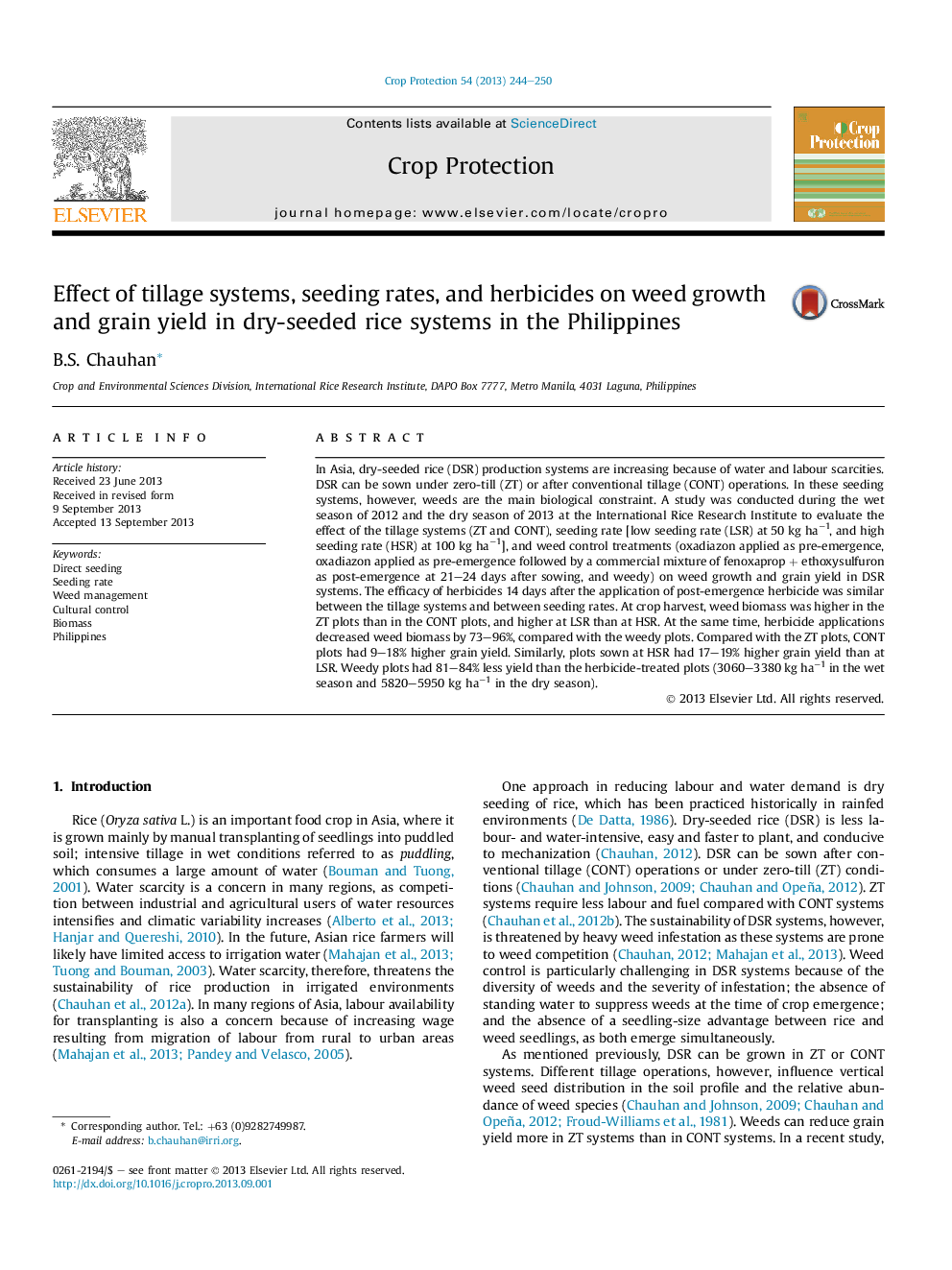| کد مقاله | کد نشریه | سال انتشار | مقاله انگلیسی | نسخه تمام متن |
|---|---|---|---|---|
| 6373832 | 1624333 | 2013 | 7 صفحه PDF | دانلود رایگان |
عنوان انگلیسی مقاله ISI
Effect of tillage systems, seeding rates, and herbicides on weed growth and grain yield in dry-seeded rice systems in the Philippines
ترجمه فارسی عنوان
اثر سیستم های خاکورزی، نرخ بذر و علف کش ها بر رشد علف های هرز و عملکرد دانه در سیستم های برنج خشک شده در فیلیپین
دانلود مقاله + سفارش ترجمه
دانلود مقاله ISI انگلیسی
رایگان برای ایرانیان
کلمات کلیدی
کاشت مستقیم، نرخ بذر، مدیریت علفهای هرز، کنترل فرهنگی، زیست توده، فیلیپین،
موضوعات مرتبط
علوم زیستی و بیوفناوری
علوم کشاورزی و بیولوژیک
علوم زراعت و اصلاح نباتات
چکیده انگلیسی
In Asia, dry-seeded rice (DSR) production systems are increasing because of water and labour scarcities. DSR can be sown under zero-till (ZT) or after conventional tillage (CONT) operations. In these seeding systems, however, weeds are the main biological constraint. A study was conducted during the wet season of 2012 and the dry season of 2013 at the International Rice Research Institute to evaluate the effect of the tillage systems (ZT and CONT), seeding rate [low seeding rate (LSR) at 50 kg haâ1, and high seeding rate (HSR) at 100 kg haâ1], and weed control treatments (oxadiazon applied as pre-emergence, oxadiazon applied as pre-emergence followed by a commercial mixture of fenoxaprop + ethoxysulfuron as post-emergence at 21-24 days after sowing, and weedy) on weed growth and grain yield in DSR systems. The efficacy of herbicides 14 days after the application of post-emergence herbicide was similar between the tillage systems and between seeding rates. At crop harvest, weed biomass was higher in the ZT plots than in the CONT plots, and higher at LSR than at HSR. At the same time, herbicide applications decreased weed biomass by 73-96%, compared with the weedy plots. Compared with the ZT plots, CONT plots had 9-18% higher grain yield. Similarly, plots sown at HSR had 17-19% higher grain yield than at LSR. Weedy plots had 81-84% less yield than the herbicide-treated plots (3060-3380 kg haâ1 in the wet season and 5820-5950 kg haâ1 in the dry season).
ناشر
Database: Elsevier - ScienceDirect (ساینس دایرکت)
Journal: Crop Protection - Volume 54, December 2013, Pages 244-250
Journal: Crop Protection - Volume 54, December 2013, Pages 244-250
نویسندگان
B.S. Chauhan,
